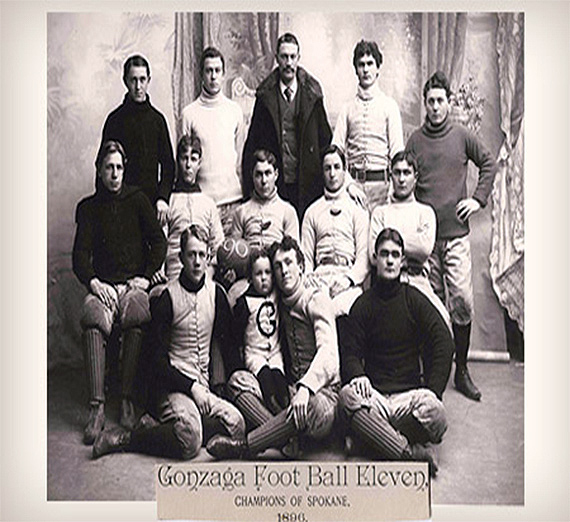Road to GU's 125th Anniversary: A Look Back at 1896-97

1896-97
By Stephanie Plowman
Special Collections Librarian
SPOKANE, Wash. — By the fall of 1896, Gonzaga College was beginning its 10th year. According to the "Catalogue of Gonzaga College" for 1896-1897, "authorities decline to receive applicants whose morals are not irreproachable, or who are under nine years of age." The academic year began on Sept. 2 and ended in the last week of June.
Student enrollment was 123 including the preparatory and academic departments. Of those students, 20 were at the college level in poetry, rhetoric, or philosophy. For boarders, tuition, board, washing and mending of linen for 10 months was $250. Day students were charged $3 a month for tuition.
The entire faculty and administration for the college level were Jesuits. Fr. James Rebmann, S.J. was president. Fr. Edward Brown, S.J., was vice president and prefect of discipline. Robert J. Smith, S.J., was prefect of studies. Fr. Jerome D'Aste S.J., was chaplain, and Fr. Paul Brounts, S.J., served as librarian. The teaching faculty included two members, Fr. Robert Smith S.J., taught mental and moral philosophy, and religion; and Fr. Patrick Mahony, S.J., taught rhetoric, poetry, physics, and mathematics.
Several events highlighted the academic year, including a program greeting Rt. Rev. Edward J. O'Dea to Gonzaga on Nov. 17, 1896. The program included music, songs performed by the College Glee Club, and the play "The Critic." An "Illustrated Scientific Lecture" was delivered March 2, 1897. The Gonzaga Debating Society gave a public debate on March 17 based on the question "Should the United States recognize the Cubans as Belligerents?" An Elocution Contest was held June 15, before commencement, with faculty and Jesuit scholastics serving as judges. Both the junior and senior classes of the academic departments took part in the competition.
Commencement was held June 23, 1897. The program included a performance by the Gonzaga Band, a play called "The Bells" with musical interludes by the Glee Club, and two other musical pieces. The valedictorian was James J. Stewart from Spokane. Oscar A. Kenck earned a Masters of Arts, while Thomas J. O'Hanlon, James J. Stewart, Richard J. O'Shea, and Albert F. Kenck earned Bachelor of Arts degrees.
By 1897, Gonzaga College had awarded only 13 degrees: 11 Bachelor of Arts, 1 Masters, and 1 Doctor of Laws. The first degrees were awarded to two individuals in 1894.
Students in 1896 participated in various organizations such as the Sodality of the Blessed Virgin Mary, the Sodality of the Holy Angels, the John Berchmans' Acolythical Society, the Gonzaga Debating Society, the St. Cecilia Philharmonic Society, the Gonzaga Band Association, and the Gonzaga Athletic Association. The athletic organization was "organized to afford indoor amusements during cold and inclement weather, to promote physical development of its members by manly games and healthful exercise, and to foster a College spirit among the students."
Among these "manly" sports was football, which began in 1892. Coached by Dr. Henry Luhn, who had played on Notre Dame's first team, Gonzaga played two games that season. Gonzaga won both games, beating Spokane High School 6-0 and topping Blair Business College 38-0 on New Year's Day.
